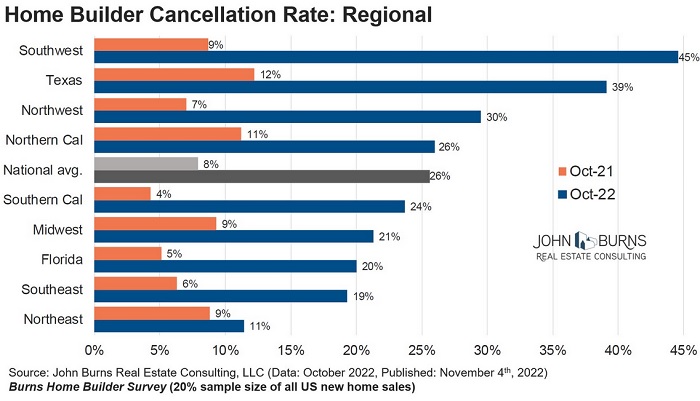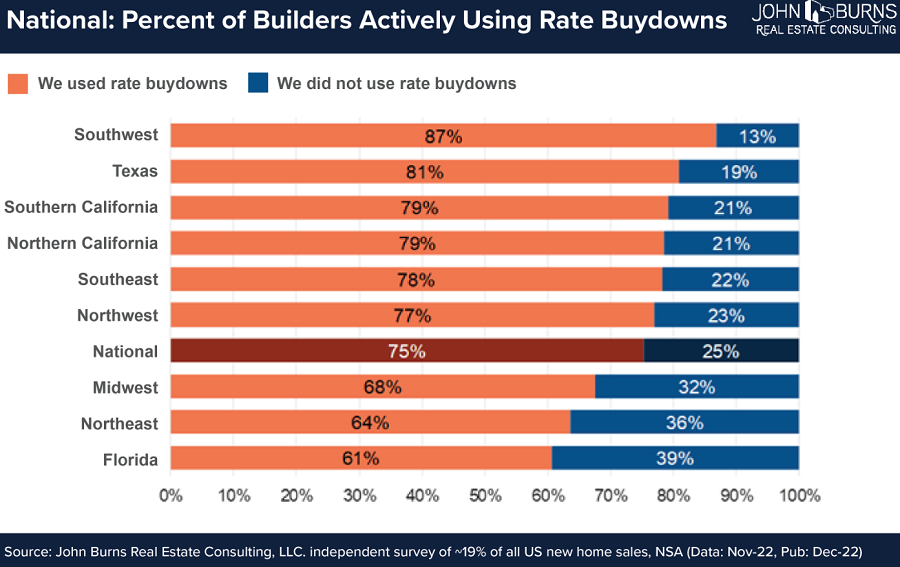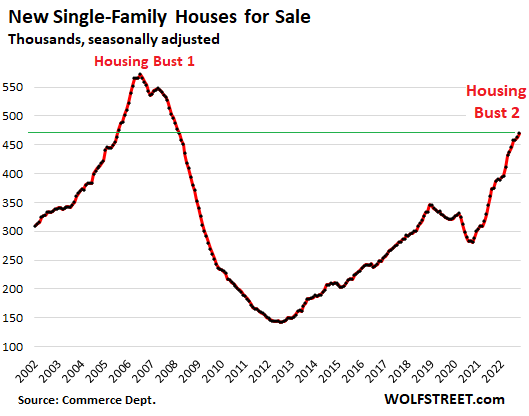Starting to Be Housing Bust 2 for Homebuilders & New Single-Family Houses
To get rid of ballooning inventories amid spiking cancellations & plunging sales, builders try to sell to rental operations, but they pulled back too.
By Wolf Richter for WOLF STREET.
If a homebuilder cannot sell their ballooning inventory of unsold new houses to households, at current prices and mortgage rates, amid plunging sales and soaring cancellation rates of signed contracts – topping out at 45% in the Southwest and at 38% in Texas – despite aggressive incentives such as mortgage-rate buydowns to stimulate sales and prevent cancellations, well, whom are homebuilders supposed to sell those houses to?
Rental operations? That may be hard too because many have pulled back for all the same reasons as households: Prices are too high, and financing is too costly. Sales to single-family rental investors have plunged by 32% in Q3 from a year ago. So here we go with a good-luck nod…
Lennar, the second-biggest homebuilder by market capitalization, has been approaching big rental landlords with an inventory list of about 5,000 houses, that it wants to offload, according to sources cited by Bloomberg. Many of the houses are in the Southwest and Southeast. They include entire subdivisions.
Lennar has sold about 1,000 single-family houses to rental operators in its third quarter – and some of those houses it sold to its own rental operation. Last year, Lennar obtained $1.25 billion in equity commitments from Allianz Real Estate and Centerbridge Partners for its rental division to buy rental houses.
“Our program has taken a very disciplined approach to stepping back and waiting for the market to kind of reconcile itself,” Lennar Executive Chairman Stuart Miller told analysts in September. “Contrary to what you might have thought, we’re probably selling less to our own program and more to other SFR programs outside of Lennar.”
It’s across the industry: Homebuilders have pitched at least 40,000 new houses to rental operators in recent months, Jeff Cline, an executive director at commercial real-estate advisory SVN, told Bloomberg. He said that many of these houses had originally been sold to individual buyers who then canceled the purchase contract.
Cancellations of signed contracts with individual buyers have spiked. According to a survey by John Burns Real Estate Consulting of homebuilders that account for roughly 20% of all new home sales, the cancellation rate spiked to 26% in October, up from a rate of 8% a year ago, and up from 11% in October 2019.
The cancellation rates topped out in the Southwest at 45%, up from a cancellation rate of 9% a year ago. In Texas, the cancellation rate spiked to 39%, up from 12% a year ago (chart via Rick Palacios Jr., Director of Research at John Burns, click to enlarge):

With the median sold price of a new house currently at around $450,000, those 40,000 houses that builders are trying to offload to single-family rental operators would run around $18 billion.
But rental operators are in no mood to pay peak prices. They might bite after massive discounts – discounts that homebuilders are not nearly desperate enough yet to offer.
But they will eventually be desperate enough to offer those discounts – that’s the bet by some big investors in the process of raising funds in preparation for that moment.
Increasingly, homebuilders are trying to sell one or more subdivisions at a time, SVN’s Cline told Bloomberg.
Incentives, especially mortgage-rate buydowns, for individual buyers. Trying to sell houses one at a time to individual buyers is tough at those sky-high prices and current mortgage rates. The obvious solution would be to cut prices, but that’s like the last option for homebuilders for a variety of reasons, including financial metrics that Wall Street looks at. Incentives come first.
The big incentive: mortgage rate buydowns: In December, 75% of the home builders in a national survey by John Burns Real Estate Consulting said that they’re buying down mortgage rates to lower the payments for buyers. They fall into three categories of rate buydowns:
- 32% are buying down the full 30-year term. To lower the mortgage rate by 1-2 percentage points, the up-front costs for the builder amount to about 5%-6% of the sales price of the home.
- 30% are buying down the rate for only the first two years of the mortgage. To lower the rate for the first year by 2 percentage points, and for the second year by 1 percentage point, the up-front costs for the builder amount to about 2% of the sales price of the home.
- 13% are using less common buydowns.
Builders are using these incentives not only to make sales, but also to prevent or stop cancellations of sales that had already been made.
In the Southwest, 87% of the builders in the survey are buying down mortgage rates; in Texas, 81%; in Southern California, 79%; in Florida, 61% (chart via John Burns Real Estate Consulting):

What builders are up against: Inventory of new houses for sale in all states of construction in the US has ballooned to 470,000 houses, up by 21% from the already high levels a year ago, and the highest since March 2008, and about where inventory had been during the ramp-up of Housing Bust 1 in September 2005 before it all came apart. Which destroys the theory that home prices are high because the industry isn’t building enough houses:

Enjoy reading WOLF STREET and want to support it? You can donate. I appreciate it immensely. Click on the beer and iced-tea mug to find out how:

Would you like to be notified via email when WOLF STREET publishes a new article? Sign up here.
![]()
[ad_2]
Source link


